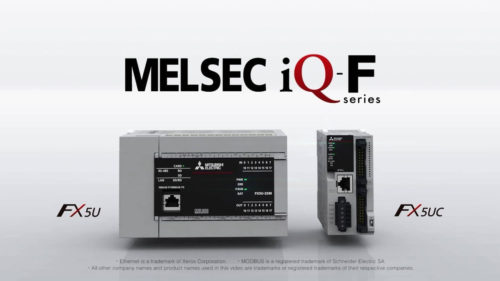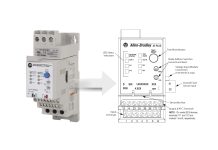
If you are looking at a PAC or a PLC, chances are you already have a good idea of what features you are looking for and what hardware and programming you hope to use.
As with anything, the best structure (i.e., ladder, function block, or structured text) for your application or process will most likely be a personal preference decision.
Sometimes, depending on the target project, it is best to use a specific type of programming that may even be previously chosen by your company due to specific needs, modularity of hardware, repeat release of a project, or ease of debugging and modification on the plant floor. This brief overview will show some history behind the Mitsubishi PLCs, hardware, and a quick look at options for code.
When looking at PLCs and applications, there are typically two sizes of controller you can consider. The PLC sizes are typically looked at as medium to large scale and small scale or stand-alone. The decision will be tied to the estimated size of the project code, actuators used, and hardware involved.

In the medium to the large-scale arena, Mitsubishi had offerings that date back to the mid-‘80s. The Melsec A Series debuted around 1985. The A was preceded briefly by the K series. These were both, as the technology back then dictated, physically large chassis-style controllers.
A newer rack-style processor with a smaller footprint, the Q series, debuted shortly after Y2K (roughly around 2002). Almost a decade later, the L series arrived (2010).
Mitsubishi’s smaller scale and standalone offerings started with the F series that arrived in the early ‘80s. The follow-up to the initial F model was the FX that waited until 1990 to show itself. This processor then went through revisions that ranged from FX to FX2 and then the FX3 that became available around 2005.
The newest processor that is available today (post-2015), which still takes advantage of some FX3 hardware, is the FX5. This processor is also known as the iQ-F following the naming convention of the newer release of the Q processor, or iQ-R. The FX5 has a few models to choose from as well. The FX5U, FX5UC, and now the newest FX5UJ. They are considered a brick-style processor but the FX5UC is much smaller. I would even suggest that the 2D footprint is not much bigger than a credit card.
The hardware and abilities of your target system will most likely be what forces you to choose between the small/medium (or could the FX5UC be called micro) size controllers like the FX or FX5UC and the larger size controller like an L or Q. The unique thing about these processors is that you still have a wide range of abilities even on the smallest model that includes various analog I/O (built-in and modular) as well as high-speed counting and multi-axis control that can be used for servo and variable frequency drives.
When it comes to axis control and Mitsubishi, I like to stick to their proven fiber-optic network communications (SSCNET). It is available in 4-axis and 8-axis for the iQ-F lineup. Anything over 8 axes will require you to leave the smaller iQ-F family and go up to the iQ-R. If you do need more than 8, iQ-R offerings can get extreme.
With the SSCNET you can get what is called a motion CPU that offers 16, 32, and 64 axis control. These offer the expandability of up to 3 CPUs that can control up to 192 axes. Beyond that, if the system needs more axes control than that, AND you are using Mitsubishi’s CC-Link IE TSN network, you can choose modules that can support 64, 128, and 256 axes per module.
The Mitsubishi website has a great intuitive layout to help narrow down what controller to use with the aid of tables showing the controller’s specs and abilities. Their controllers also range in abilities when it comes to data logging and processor speeds, and I/O hardware options.
On the programming side, the IEC61131-3 programming standard is used by most, if not all, programming software these days. With that said, Mitsubishi does follow this standard in their GX Works suite of software.
Programming can be done with the five main IEC languages (ladder (LD), sequential function chart (SFC), function block diagram (FBD), continuous function chart (CFC), and structured text (ST)). At this time, I have personally never used the SFC or CFC interfaces.
Whatever your project is, review the requirements, become familiar with the controllers and associated hardware abilities, and make the choice that will best compliment your system’s needs.
Written by Paul Hunt
Senior Automation Engineer and Freelance Writer
Have a question? Join our community of pros to take part in the discussion! You'll also find all of our automation courses at TheAutomationSchool.com.
Sponsor and Advertise: Get your product or service in front of our 75K followers while also supporting independent automation journalism by sponsoring or advertising with us! Learn more in our Media Guide here, or contact us using this form.
- Mitsubishi PLCs: Brief History and Hardware Overview - August 2, 2022
- Mitsubishi PLCs: FX5 vs iQ-R - February 10, 2022
- How To Register and Use a Device Profile in GX Works3 - November 9, 2021

Discover more from The Automation Blog
Subscribe to get the latest posts sent to your email.






